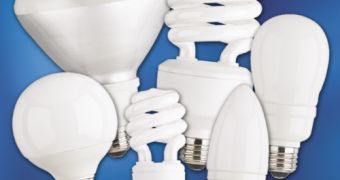In recent times, more and more countries have begun expressing their support for Compact Fluorescent Light (CFL) bulbs over conventional, incandescent ones. The advantages became clear once statistics showed that CFLs decrease the energy consumption by 40 or, in some cases, even 60 percent. The save in cumulated carbon emissions could help make a difference in adverting more global warming effects on the planet, officials say.
Another reason for the international support of CFLs is that they reduce the strain conventional light bulbs place on the power grids. Technically speaking, a fluorescent light bulb outputs the same light (measured in watts) as a regular bulb, but only takes up half the electrical demands. That translates into the U.S. saving as much as 16.6 billion tonnes of carbon from being released into the atmosphere between 2014 and 2030. The Congress approved a bill that takes incandescent lighting out of the picture between 2012 and 2014, when the entire nation will have to get its light from CFLs.
Opponents to these proposals argue that fluorescent bulbs contain mercury and other dangerous chemicals, which can create a risk hazard around landfills or even in homes, when they burn out. But authorities seem to think that this risk is acceptable and that the side-effects wouldn't offset the benefits. Environmentalists are divided in two groups. One believes that the reduction of carbon emissions is well worth the effort, while the other says that the health risks are too great to be ignored.
The main rival CFL lighting has are LEDs (light emitting diodes), which are even more eco-friendly than fluorescent bulbs and do not contain dangerous chemical substances. The problem with LEDs is that they are very expensive, as the semi-conductors used in their manufacturing processes don't come cheap. We're talking about an $80 light bulb that, for now, is out of the question. However, several companies are working on cheaper, more commercially sustainable alternatives.
Overall, from Europe to Australia and America, countries have pledged to reduce and, over time, eliminate incandescent bulbs completely. And with CFLs being the only viable alternative, it's very likely that the future will be fluorescent.

 14 DAY TRIAL //
14 DAY TRIAL //